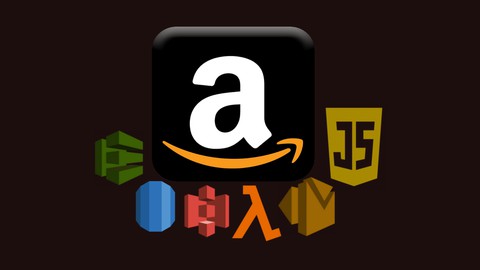Description
In this course we are going to learn Amazon Web Services (AWS) with JavaScript & NodeJS, so Amazon Web Services (AWS) is the world’s most comprehensive and broadly adopted cloud platform, offering over 200 fully featured services from data centers globally. Millions of customers including the fastest growing startups, largest enterprises, and leading government agencies are using AWS to lower costs. And you can use AWS with different programming languages, in this course we want to learn AWS with JavaScript & NodeJS.
This course is divided in to different sections, we are going to use SDK version 2 and Version 3 for JavaScript, it means first we create our examples using JavaScript V2 SDK and after that V3 SDK.
- In the first section we are going to talk about IAM, so IAM is AWS Identity and Access Management. With IAM, you can specify who can access which services and resources, and under which conditions, we will create some examples with AWS console and after that we go through JavaScript examples. also we are going to work with two versions of JavaScriptSDK V2 and also V3
- In the second section we want to learn about AWS Dynamodb, so DynamoDB is a fully managed NoSQL database service that provides fast and predictable performance with seamless scalability. DynamoDB lets you offload the administrative burdens of operating and scaling a distributed database so that you don’t have to worry about hardware provisioning, setup and configuration, replication, software patching, or cluster scaling. You don’t need to worry about these, because all of them are done by dynamodb.
- In the third section we want to talk about amazon S3, so S3 stands for Simple Storage Service, it is an object storage service that offers industry-leading scalability, data availability, security, and performance.
- In the fourth section we want to learn about Amazon RDS or Amazon Relational Database Services and we want to learn about two relational databases and their integration with JavaScript like MySQL and Postgres.
- In the fifth section we are going to learn about Amazon EC2 or we can say elastic compute cloud and it provides scalable computing capacity in the Amazon Web Services (AWS) Cloud. We create some examples using the AWS console and after that we go through JavaScript, also we are going to deploy a NodeJS RESTAPI project in EC2.
- In this sixth section we are going to talk about Elastic Beanstalk, Code Pipeline, Amazon RDS, Route53 and Certificate Manager, we create a simple REST API with NodeJS and we mix these technologies together.It means that we add relational database to our NodeJS RESTAPI, after that we deploy our project using Code Pipeline to Elastic Beanstalk, after that we add a custom domain name to REST API using Route53 and at the end we request a certificate from AWS Certificate Manager and we assign that to the Nodejs Rest API
- In the seventh section we want to talk about AWS Lambda Function , so it is server less computing service that lets you run code without provisioning or managing servers.
- In the eight section we want to learn about AWS SES or we can say Simple Email Services, and using this service we can send emails to our customers.

